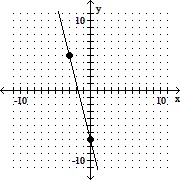Some acquisitions are made to build capabilities. Others are made to gain market power, reducing costs, or increasing growth. Briefly describe these four reasons, and clarify the main difference between the building capabilities motivation and the other three motivations for acquisitions.
What will be an ideal response?
Companies make acquisitions to reduce costs by developing economies of scale through horizontal acquisitions: buying a competitor in the same market. Economies of scale also can be gained though vertical acquisitions: buying a supplier or competitor. Market power can be gained through horizontal and vertical acquisitions. Horizontal acquisitions allow the acquiring firm to eliminate industry overcapacity by closing down duplicate operations by its former competitors. Increasing size is especially effective when the industry is fragmented into many small companies. Through acquisitions, the firm can grow. All of these reasons for acquisitions are focused on exploiting current advantages. Acquisitions made for the purpose of building capabilities are future oriented. These acquisitions are focused on gaining control over a target firm's unique employee skills, organizational technologies, or superior knowledge. It is also possible that pooling the acquired and target firms' resources and capabilities will encourage the development of new "centers of excellence."
You might also like to view...
Find the volume of the solid generated by revolving the region about the given line.The region bounded above by the line  , below by the curve
, below by the curve  , and on the right by the line
, and on the right by the line  , about the line
, about the line 
A.  ?
?
B.  ?
?
C.  ?
?
D.  ?
?
Decide whether the slope is positive, negative, zero, or undefined.
A. Zero B. Undefined C. Positive D. Negative
Perform the indicated operation. (-12) + 5 - 9 - (-5)
A. -3 B. -11 C. -21 D. -13
Use synthetic division to show that g(x) is a factor of f (x), and complete the factorization of f (x).g(x) = x - 5, f (x) = x3 + 7x2 - 33x - 135
A. (x + 5) 2(x - 3) B. (x - 5)(x + 3) C. (x + 5)(x - 3)(x - 9) D. (x - 5)(x - 3) 2 E. (x - 5)(x + 3)(x + 9)